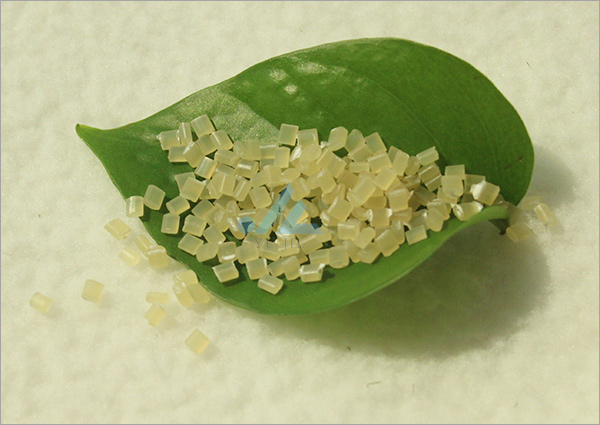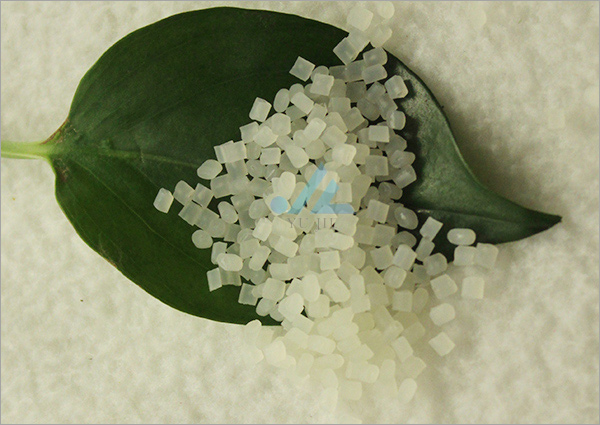- The Winter Solstice brings good fortune, and warmth awaits the return of spring. Yujie Chemical invites you to a warm winter appointment!
- The volume of industrial textiles is stable and the quality is improving with strong momentum!
- Under the warm winter sun, you must know these sun protection tips from Yujie Chemical!
- The cold of winter has arrived, and static electricity is coming. How can we take precautions in our daily life?
- Innovation and upgrading in the textile industry open up new development space!

- Tel: 0086-13957173655
- Email: zpl620504@163.com
- Add: Canghexia No. 36, Tiyuchang Road, Xiacheng District, Hangzhou, Zhejiang, China
In the first half of the year, there was still a general situation of sluggish performance, and enterprises adopted an increasingly convergent strategy in transition adjustment.
Hung Hom’s net profit fell in the first half of the year, and the brand was rejuvenated.
On August 27, Hung Hom released its semi-annual report for 2019. The company achieved operating income of 1.473 billion yuan in the first half of the year, down 1.18% year-on-year; net profit attributable to shareholders of listed companies was 109 million yuan, down 31.42% year-on-year. Hung Ho said that the decline in revenue was mainly affected by the overall economy of the industry.
Hung Hom said that in the first half of the year, the company continued to build three core competencies around the transformation and upgrading of the Hung Hom brand: healthy and comfortable product development and integration capabilities, fast fashion supply capacity and new retail capabilities. To create a "young leisure, healthy and fashionable" Hung Hom specialty products and positioning, with "technology + fashion" as the main line, from the new style to the new category. The company believes that the demand for traditional business leather shoes has dropped significantly, and the demand for sports and leisure style products is gradually increasing.
Hung Hom mentioned that in the first half of the year, the company established a flexible and fast fashion product supply model, reformed the ordering mechanism, reduced the proportion of initial orders, increased the proportion of quick replenishment orders and quick return orders, and created a linkage plan for central planning, regional demand planning and store sales planning. . In the East China region pilot headquarters direct matching mode, daily replenishment from the central warehouse to the terminal store. In the channel structure, promote the entry of shopping mall channels and seek strategic cooperation with quality shopping centers. The company promotes new retail innovations and builds a monthly linkage model and rapid response mechanism for stores, parks, molecular companies, headquarters merchandise, and R&D.
Hung Hom is also looking for multiple investment channels in the first half of the year. On March 14, Hung Hom announced that in order to broaden the scope of industrial investment, the company's wholly-owned subsidiary Ningbo Meishan Bonded Port Area Hung Ho Asset Management Co., Ltd. plans to use its own capital of 80 million yuan and Suzhou Xili Equity Investment Management Center (limited Partner), Pukou Development Zone High-Tech Investment Co., Ltd. jointly established Nanjing Pukou Xieli Venture Capital Center (limited partnership), the investment field is electronic information service industry (new retail, big consumption, TMT, big data), advanced manufacturing (shoes and clothing) Manufacturing, artificial intelligence, new materials, integrated circuits), high-end equipment (shoes and garments preparation technology, high-end road equipment, new technologies, new processes) and other strategic emerging industries.
Aokang International's net profit decline in the first half of the year, establishing a partner business model
On August 27th, Aokang International released the semi-annual report for 2019. The company achieved operating income of 1.325 billion yuan in the first half of the year, down 15.75% year-on-year; net profit attributable to shareholders of listed companies was 95.941 million yuan, down 43.13% from the same period of the previous year. According to the company, the year-on-year decline in operating income was mainly due to the overall weak macro economy in the first half of the year, weak consumer demand and the impact of the traditional footwear industry. Optimizing channel layout during the company's transformation and upgrading process led to a decline in revenue.
According to the semi-annual report, Aokang International implemented the “Aokang” brand as the mainstay, and the multi-brand model supplemented by brands such as “Kanglong”, “Skeqi” and “Puma”. The Aokang brand provides mid-to-high-end business fashion products for the target customers of 25-35 years old; the Kanglong brand is positioned for fashion and leisure, with young consumers as the main force; the Skech brand products cover children and adults over 3 years old, including sports shoes and apparel. , supporting products, etc.; Hummer brand products are mainly leisure and sports series, involving running, football and other fields.
Aokang International said that in the first half of 2019, the company selected the best and the fittest, focused on improving the efficiency of single store, and created a new image of “Aokang Life Museum” and “Kanglong Original Designer Store” terminal; the company first tried the brand authorization model and established a partner. The business model is based on the Aokang leather shoes brand as the core product category. In addition to creating a social retail market and promoting new retail online business, the company cooperates with Tencent Smart Retail to obtain traffic through WeChat payment courtesy and friend circle advertising, and the company will continue to explore the social retail sector.
Daphne International still recorded a loss in the first half of the year, and the store transformation "joining system"
On August 27, Daphne International disclosed its interim results for the first half of 2019. The company achieved a turnover of HK$1,403 million in the first half of the year, a decrease of 37.9% year-on-year; and a gross profit of HK$651 million, a year-on-year decrease of 39.7%. Net profit loss was HK$390 million, compared with a loss of HK$493 million in the same period last year. Daphne International said that the year-on-year decline in revenue was mainly attributable to the decrease in the Group's sales point by 34.8% year-on-year and the decline in same-store sales of its core brand business. The Group continues to integrate and adjust its store network to cater to its new brand image. The Group closed 612 points of sales in the first half of the year. As of the end of June, the Group had a total of 2,208 sales points.
Daphne International said that in the first half of the year, the Group opened a new image store in the shopping mall channel and continued to renovate the store. The group worked with a professional brand consulting company to reposition the Daphne brand. In response to the development trend of sports and leisure, the Group launched sports and leisure products and increased investment in product research and development. The Group's spring and summer series launched more sports and leisure products, facing young customers with fashion and comfort.
Daphne International mentioned that the Group's e-commerce business continues to increase its contribution to the Group's total turnover and maintain profitability. The Group will adjust its sales channel strategy and pursue a “light asset” business model, which will focus on e-commerce business and supplemented by physical store business. The Group will continue to optimize its sales network and transform more stores into “partnership systems” or “joining systems”. The Group will continue to expand its sports and leisure products and continue to reposition its brand.
Tianchuang Fashion's net profit decline in the first half of the year
On August 22, Tianchuang Fashion released its semi-annual report for 2019. The company achieved operating income of 1.046 billion yuan in the first half of the year, up 4.28% year-on-year; net profit attributable to shareholders of listed companies was 121 million yuan, down 12.40% year-on-year.
The semi-annual report shows that the company is a multi-brand operator of fashion women's shoes. It has six women's shoes brands, including five high-end women's shoes own brands "KISSCAT", "ZSAZSAZSU", "tigrisso", "KissKitty" and "KASMASE". ", as well as acting for the Spanish high-end women's shoes brand "Patricia". In addition, the company expands its fashion lifestyle brand and category, launches the men's own brand “MUST HAVE”, represents the Italian fashion brand “O BAG”, and participates in the international designer brand United Nude (UN).
According to the semi-annual report, the company's footwear apparel sector achieved operating income of 870 million yuan in the first half of 2019, a decrease of 0.9% year-on-year. Tianchuang Fashion said that in the first quarter of 2019, the footwear apparel business recorded a decline in operating income and net profit at home. In the second quarter, the company adjusted its operating focus and accelerated the product group systemization at the product end. Optimize the CRM membership system of each brand to strengthen member operations; through refined management and control costs, the operating income of the footwear and apparel segment in the second quarter increased slightly compared with the same period of the previous year, and the e-commerce business achieved a year-on-year growth of approximately 50% in the second quarter. Net profit increased by 40.98% year-on-year.
Tianchuang Fashion said that in the first half of the year, the company adjusted or optimized the inefficient stores. In the first half of the year, the company closed a total of 64 stores, and integrated resources into key and Class A stores to improve the efficiency of single store operations. As of the end of June, there were 1,861 offline channel stores, of which 1,318 were directly operated and 543 were joined. In the first half of the year, online business grew by 26% year-on-year, and the proportion of the main business income of the fashion footwear apparel sector expanded from 14.55% in the same period last year to 18.38%. Tianchuang Fashion's other business segment mobile Internet digital marketing business achieved operating income of 176 million yuan in the first half of the year, an increase of 40.55%, and a net profit of 54.22 million yuan, an increase of 6.34%. It can be considered that Tianchuang Fashion's performance growth in the first half of the year is mainly supported by diversified business.
Net profit growth in the first half of Saturday, diversified business and consolidated performance
On August 19th, the semi-annual report of 2019 was released on Saturday. The company achieved operating income of 891 million yuan in the first half of the year, up 21.11% year-on-year; the net profit attributable to shareholders of listed companies was 60.844 million yuan, a year-on-year increase of 106.24%. According to the semi-annual report, Yaowang Network has been incorporated into the consolidated statements on Saturday as a holding subsidiary since March 2019. Excluding the consolidation factor, the company's clothing and footwear business revenue in the first half of the year was 570 million yuan, down 12.40% year-on-year.
On Saturday, the company is committed to “building a stylish IP ecosystem”, building “media and social platforms”, “fashion IP incubation operation platform” and “fashion IP collection platform” to transform into a new retail platform. In the first half of the year, the company continued to expand the “Saturday Mode” of shopping mall brand collection stores, and promoted the development of e-commerce business, laying out online diversified channels, using live broadcast platforms such as Taobao Daren live broadcast, Taobao C store live broadcast, and gathering, love inventory , social platforms such as baby warehouses, and closed-ended limited-time sales and public sales, to expand new sales channels and marketing models. In addition, the company changed the mode of direct store-based in the early stage of the collection store, and gradually increased the proportion of participating in the collection store. In addition, the company will gradually change the original department store self-operated stores into franchise stores.
Recently, some investors have asked how the company's women's shoes business is expected to achieve breakthroughs and growth in the current downturn. On the investor interaction platform on Saturday, a company will use the three platforms established to improve the aggregation and liquidity of consumer traffic. On the other hand, it optimizes the main business model, improves the channel structure and product structure, and builds diversity. The sales platform of fashion products, while adjusting the structure of the store, reducing the proportion of self-operated stores, gradually moving towards light assetization, improving inventory, capital turnover and operating cash flow. In addition, the company will gradually increase the proportion of casual and fashionable sports products in the product structure.
The market is still in the doldrums, and footwear companies want to transform into a “light asset” model.
The performance of footwear listed companies in the first half of 2019 continued to last year's downturn. Hung Hom, Aokang International, Hasen shares and other footwear companies saw a decline in net profit in the first half of the year. Two Hong Kong stock footwear companies Daphne International and Thousand Baidu recorded in the first half of the year. Losing money, Tianchuang Fashion, Saturday and other footwear companies in the first half of the revenue growth is mainly supported by diversified business, footwear and apparel sector revenue is in a downward trend.
In the face of the market downturn, footwear companies continue to transform in strategy, brand, channel, and products, and these transformation actions have no common ground. In terms of operational strategy, some footwear companies have increased their performance through diversification to find more profit growth points; in terms of brands, companies continue to work on multiple brands, intending to cover more market segments and conduct brands. In terms of product style, the company plans to introduce more fashionable, casual and sports style products to meet the needs of young consumers; in terms of channels, footwear companies find that online business is generally a performance increase. One bright spot will increase support for e-commerce business and make more attempts in social e-commerce and new retail.
In addition to the above-mentioned transformational actions, footwear companies also have a “heavy play” of transformation and adjustment, that is, the transformation and adjustment of physical channels. In this regard, in addition to regular operations such as shop-slimming, refurbishment and upgrading, footwear companies also have a common adjustment tendency: to become more “light”, such as increasing the proportion of franchise stores, increasing the proportion of online channels, and trying brand authorization. And the partner system and so on. For example, Aokang International said that the company first tried the brand licensing model and established a partner business model; Daphne International said that the company pursues a “light asset” business model, which will focus on e-commerce business, supplemented by physical store business, and will be more Multi-stores have been transformed into a “partner system” or “joining system”; on Saturday, it will gradually increase the proportion of affiliated stores, and the company will gradually change the original department store’s self-operated stores into franchise stores, gradually moving towards lighter Assetization.
The above-mentioned footwear companies' transformation into the “light asset” model, including the introduction of more young-style products, and the establishment of a rapid response flexible supply chain model mentioned by some footwear companies, and other transformational adjustment measures, reflect the footwear companies Under the situation that the external market environment is relatively sluggish and the industrial development is at the bottom of the cycle, the company intends to increase the operational flexibility and improve the transformation acumen. However, no matter what kind of transformation adjustment strategy is adopted, it is more likely that the footwear enterprises that cultivate their own unique competitiveness and improve the sustainability and stability of the transformation will become the winners of the market.
- Under the warm winter sun, you must know these sun protection tips from Yujie Chemical!
- The Winter Solstice brings good fortune, and warmth awaits the return of spring. Yujie Che
- The volume of industrial textiles is stable and the quality is improving with strong momen
- The cold of winter has arrived, and static electricity is coming. How can we take precauti
- Innovation and upgrading in the textile industry open up new development space!
- Jinchun Polymer congratulates the successful convening of the 2025 National Academic, Tech
- Hangzhou Yujie Chemical Co., LTD. Non-woven fabric color masterbatch, welcome to purchase!
- The operation of China's industrial textile industry was generally stable in the first thr
- Don't let your guard down in autumn sun protection! Ultraviolet rays are still strong. Ple
- The textile industry forges new competitive advantages!



